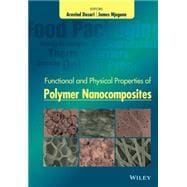The first book to extensively cover nanoparticles, this addresses some of the key issues in nanocomposites.
- Polymer nanocomposites (polymers reinforced with nanoparticles), are of great interest due to their remarkable mechanical, thermal, chemical properties as well as optical, electronic, and magnetic applications
- Potential applications include automobile body parts, high-barrier packaging materials, flame-retardants, scratch-resistant composites, and biodegradable nanocomposites
- Combines basic theory as well as advanced and in-depth knowledge of these properties
- Broad audience includes researchers in Materials Science, Physics, Polymer Chemistry, and Engineering, and those in industry








